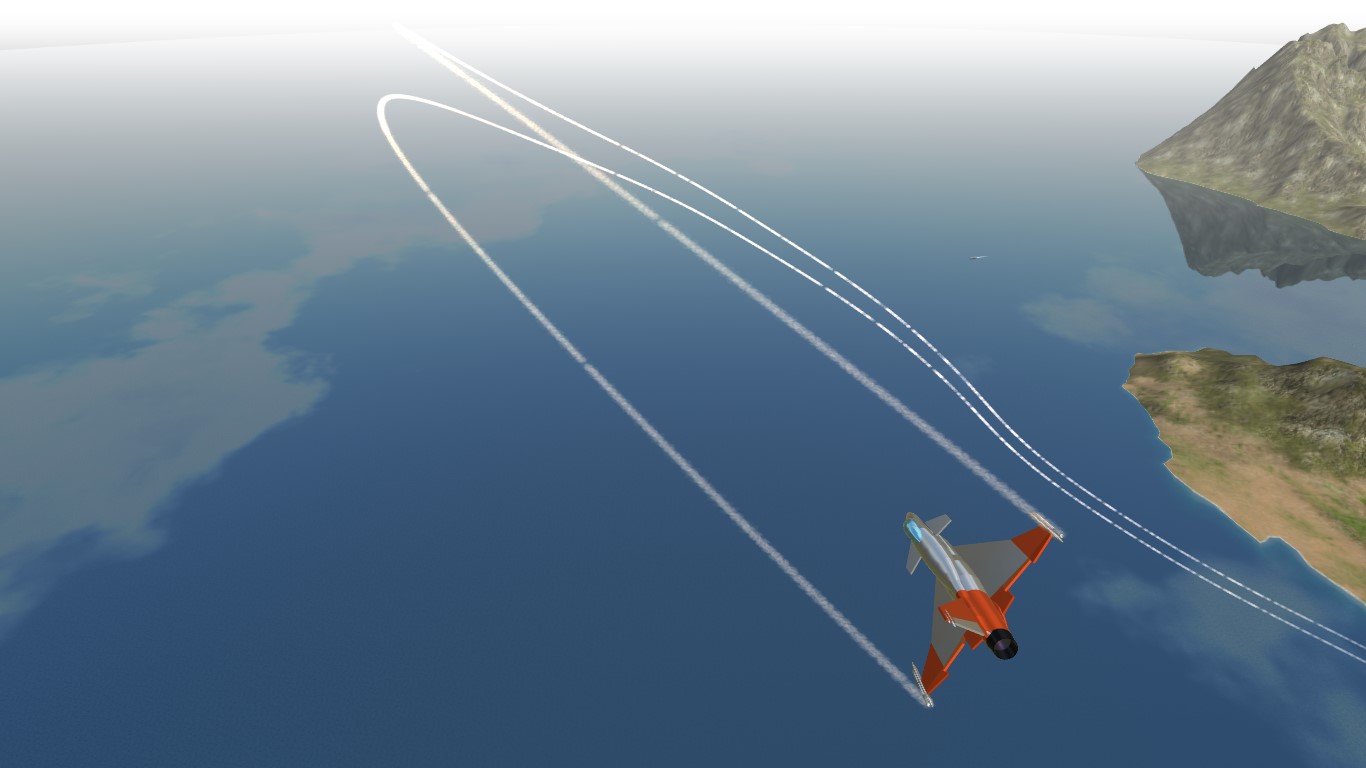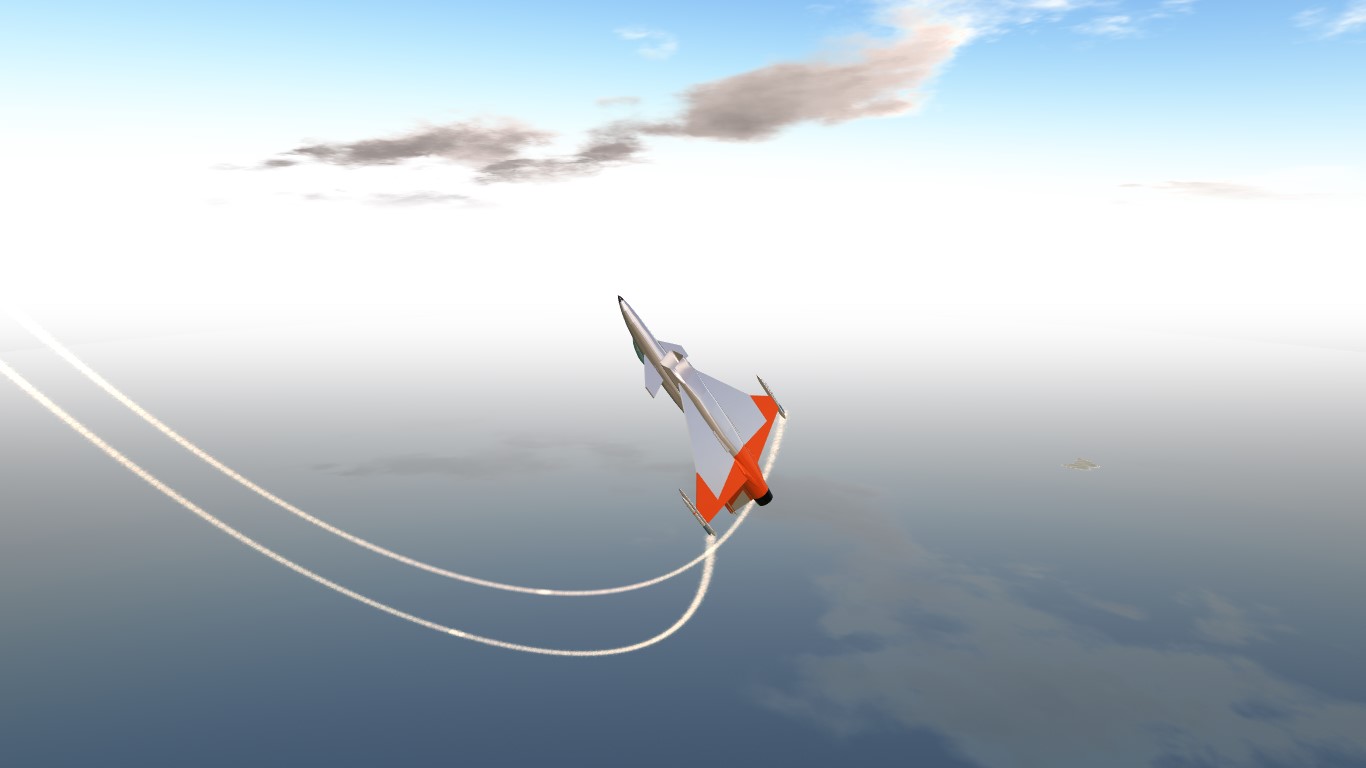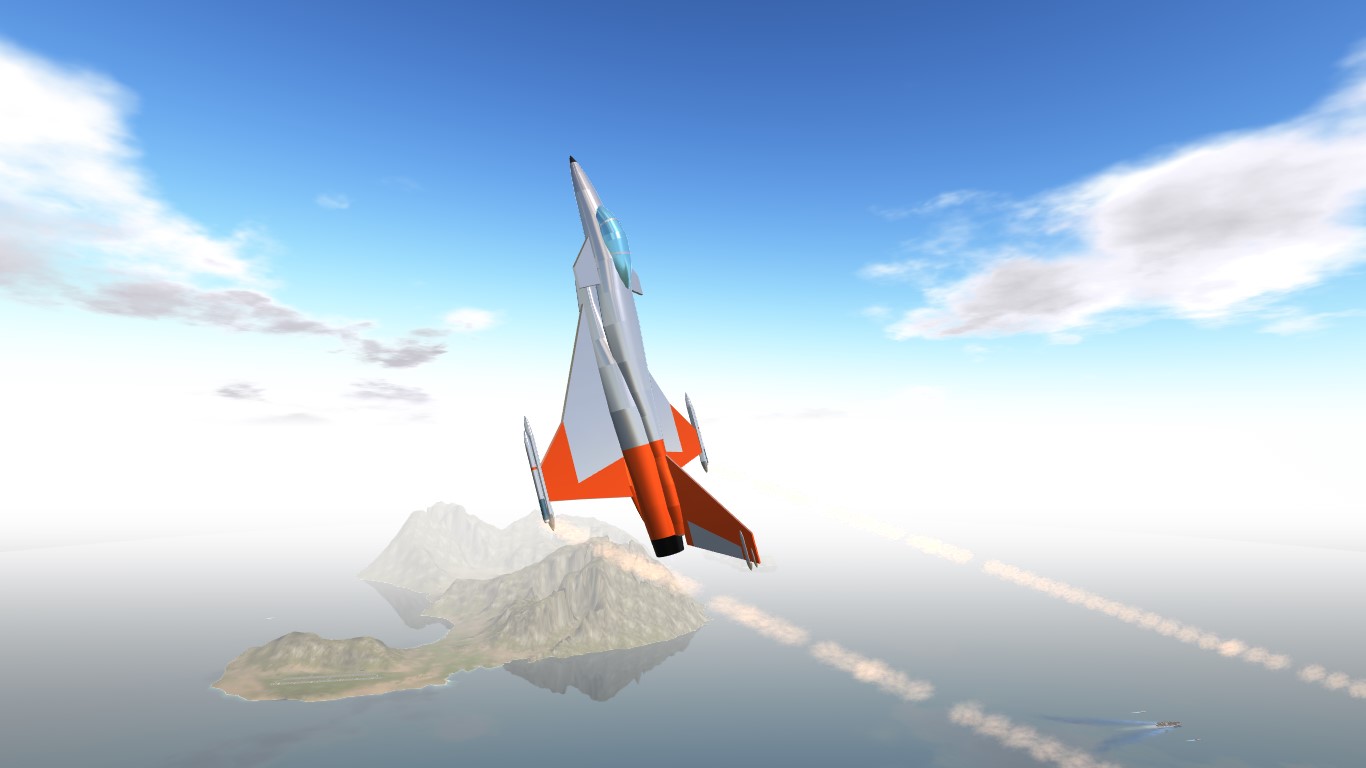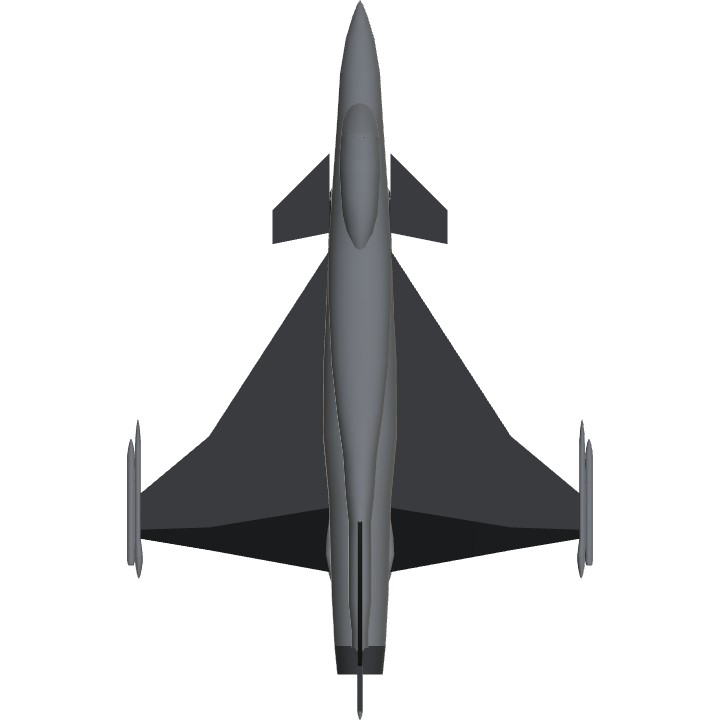BE ADVISED:
This aircraft uses NathanMikeska's Smoke Trails mod. If you do not have the mod installed and do not wish/is unable to install it, you can download the aircraft nonetheless and have these parts removed, as they are not necessary for the aircraft's functioning. It is, however, strongly recommended, as it allows for better visualization of the aircraft's trajectory, which given its unique flight characteristics might be confusing or disorienting otherwise.
NOTE:
Once thrust vectoring is activated, it is highly recommended to fly the aircraft using keyboard instead of mouse joystick due to the highly unstable nature of the craft with thrust vectoring on. On the other hand, after some practice it is possible to do some interesting maneuvers with the plane using keyboard only.
CONTROLS:
AG 1: Drag/Emergency Spin Recovery Chute
AG 5: Wingtip Smoke Pods On/Off (Requires Smoke Trails Mod)
AG 6: Activate/+10 Degrees for Thrust Vectoring, Vertical Axis
AG 7: Activate/+10 Degrees for Thrust Vectoring, Vertical Axis
OPERATIONAL NOTES FOR TEST PILOTS:
This aircraft has two systems rotating the engine nozzle, activated by AG6 and AG7. Each one of them allows the nozzle to move 10 degrees in the vertical axis; with both activation groups on, the nozzle can move 20 degrees.
With the nozzle restricted to 10 degrees maximum (either activation group on), it can only depart from stable flight at speeds around or under 270 mph. At speeds above 300 mph, it is safe to pull sustained turns in the aircraft, as long as throttle is kept at full power.
With the nozzle free to rotate at its full 20 degrees, departure from stable flight can be achieved at up to 500 mph or slightly more depending on conditions. Departure can usually be forced at speeds up to 570 mph by quickly pushing the nose down for a moment and then suddenly pulling the nose up. It is NOT SAFE to pull sustained turns at any speed when both activation groups are on, as the aircraft will bleed energy until it reaches around 500 mph and departs from stable flight.
Be wary of over-correction when using thrust vectoring. Most times, slightly erratic flight behavior will resolve itself if you let go of commands or apply gentle corrections. Trying to correct these situations abruptly might make them worse and send the aircraft into a spin. While you're still not familiar with the aircraft, slowly expand your flight envelope until you get a feeling for its flight characteristics before attempting more abrupt maneuvers.
Keep track of your speed and altitude. It's easy to lose both very quickly when doing turns at high AoA and post-stall maneuvering under thrust vectoring.
Control Loss and Spin Recovery Procedure (ATTENTION):
Due to the aircraft's mission and flight characteristics, it is very likely that at one point during test flights you will encounter loss of control, most usually in various forms of spin. (Also keep in mind some spins are easily controllable and do not warrant a lengthy recovery process. you may even perform them purposefully.) In less severe cases, it is possible to exit these conditions by simply forcing the aircraft's nose down with thrust vectoring and holding it there for a few seconds. However, you may encounter a situation where that is not sufficient. In that case, follow the procedure below:PRECAUTION - Make sure you have enough altitude for the recovery process. It is best to conduct high AoA and post-stall maneuvering testing at altitudes around 10,000 - 15,000 feet.
- Let go of flight controls. Cut throttle and deploy airbrakes while pushing elevators down. Hold until aircraft is somewhat better stabilized, and pointing roughly downwards. This will NOT completely stabilize the aircraft, so don't wait too long. In extreme cases: Deploy drag chute (AG 1).
- Increase throttle and, with full thrust vectoring engaged, push the nose down. Hold it down until the aircraft exits the spin in a dive. If aircraft does not exit spin: Repeat step 1 and deploy drag chute.
- Recover the aircraft from the dive. It is recommended to deactivate thrust vectoring prior to doing so to prevent a new spin. However, if circumstances do not allow for this (for instance, if step 2. is concluded too close to the ground and there is not enough space for a non-thrust vectoring turn), recovery may be attempted with thrust vectoring engaged. Most experienced pilots will be able to pull this off without major problems.
It isn't just for insane paper projects and completely impractical concepts that Socrux's Experimental Research Department lives by. After the mess they had done earlier in the Cold War, with their funding cut and other departments closely watching them, they were compelled to pursue more practical concepts that could be feasibly used in future combat aircraft.
The APMA-EV (Aeronave Plataforma de Manobrabilidade Avançada - Empuxo Vetoriável: Advanced Maneuverability Platform Aircraft - Thrust Vectoring), nicknamed "Garrucha" (a type of small sawn-off shotgun), is a small delta-canard aircraft with a very subtle cranked delta configuration designed to test advanced maneuverability concepts, mainly thrust vectoring.
It is not particularly agile without the use of thrust vectoring, but with TV it is able to perform extremely tight Kulbits and other post-stall maneuvers, pulling turns and reversals with incredibly tight turn radii, as well as departing from stable flight while still maintaining a level of controllability. It requires an experienced pilot to handle once its thrust vectoring is unrestricted, and test pilots have taken a while to get used to the aircraft. Nevertheless, it was an important milestone for Socrux engineers in better understanding advanced maneuverability concepts.
And there we go! This plane does nothing functional. It doesn't have armament, it's not very fast, it doesn't even turn too well, but it's a blast to mess around with. Out of all planes I've made, it's the one I enjoy flying the most because of the crazy stunts it can pull off (sometimes without you wanting it to...). It looks real nice while doing it too, IMO.
IMAGE GALLERY

Pugachev's Cobra (with extended high AoA control)

...Kulbit?

Low-speed thrust vectoring turn

I have no idea what I'm doing

Spin recovery
Random photos:










Specifications
General Characteristics
- Created On Windows
- Wingspan 33.6ft (10.2m)
- Length 51.9ft (15.8m)
- Height 18.0ft (5.5m)
- Empty Weight N/A
- Loaded Weight 15,431lbs (6,999kg)
Performance
- Power/Weight Ratio 2.184
- Wing Loading 35.4lbs/ft2 (172.8kg/m2)
- Wing Area 435.9ft2 (40.5m2)
- Drag Points 3383
Parts
- Number of Parts 94
- Control Surfaces 7
- Performance Cost 495
Required Mods
-
Smoke Trails
by NathanMikeska
Version 1.1 (2/21/2019 6:18:54 PM)
View Mod Page







@NirvashTec Mihaly intensifies
@FlyingHueman Remember the (((AC Server)))
Yes it did, thank you for that tip @Mustang51
@OmegaDestroyer I hope that makes things easier!
Oh okay @Mustang51
@FlyingHueman now that you say that I totally see it! It has a lot of aspects from different planes. It’s a great build
@Mustang51 My main inspiration for this was the X-31, but it does have serious baby Typhoon looks to it. Except this time there's no fly-by-wire... at least you won't lose the plane due to pitot failure, lol.
Dude, Awesome build but could you compare my E-31 FightingLight to this? They are both insane at maneuvers but if you fly mine, vtol HAS to be down
This is magnificent! It reminds me of a Eurofighter crossed with a Saab Gripen. Very nicely made plane and it manoeuvres very well!
@OmegaDestroyer you can. You download it and then click the undo and after that the redo button. The plane will spawn without the mods. Sometimes it’s a little different but often hardly anything has changed
If you have IOS, you can’t even download a plane with mods
@Mustang51 tagging